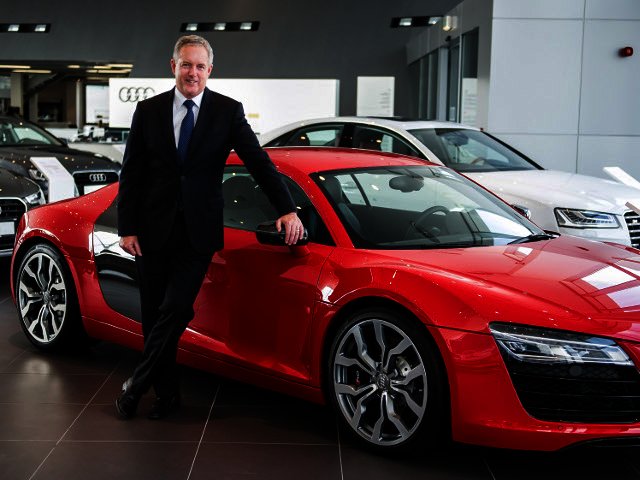By Trevor Hill, Head of Audi SA
Ever-increasing urbanisation and the subsequent demand for development of cities is the catalyst needed to bridge both the greatest challenges and most creative solutions for a future of automotive sector. What we face now is undoubtedly the next automotive revolution.
And, it makes sense.
The city is where human life is expected to take the most significant quantum leap. Associated with this, is demand for technology that keeps (or even exceeds) the pace of how society will itself expect to be mobile.
According to McKinsey, Africa is urbanising faster than any other region – where cities are projected to gain an estimated 24-million more people each year until 2045. If the McKinsey numbers stack up, then it follows course that as an automotive sector our own investment in technology and innovation must adapt at a faster pace to meet what will be changing mobility demands.
The most logical question is, how?
For Audi, this starts with the integration of the car and its environment, especially as physical car ownership is expected to decline over time. Critical to this is an appreciation that ownership is not necessarily an indication of slower mobility demand, but rather points to the need to drive progress around innovation in the mobility space. Our work through the Audi Urban Future Initiative is just such a case in point. The initiative is an internal, interdepartmental think tank dedicated to issues of urban mobility.
The city and the car have been interacting for generations, but this latest phase of their evolution is different. Instead of urban planners designing cities around the automobile, engineers and developers are now designing cars around the functionality of the city.
With this in mind, Audi has pushed ahead with cooperation agreements with Boston and Mexico City, where we are working in partnership with local government to explore how Audi innovation technologies can be applied in an urban environment to trigger maximum benefit for both residents and businesses.
In the Boston metropolitan area, Audi is testing the advantages of its new technologies for the city in two different pilot projects. In the transformation of the city centre, car-to-X technologies will improve the traffic flow; while at the same time - automated parking will contribute to creating more space for other modes of traffic. In addition to this, Audi is working with the real-estate developers to combine the benefits of automated parking and smart fleet management.
The third Audi Urban Partnership is a joint project in Santa Fe, one of the leading business districts in Mexico City. Here, Audi is working with the association of the business district to develop ways to end permanent traffic congestion.All three projects profile the successes of our investment in technology and our ability to adapt to changing demands that will respond to the next automotive revolution.
This paradigm shift towards mobility that is compatible with the city will eventually make for an intelligent, sustainable and liveable city with zero emissions and networked traffic that flows easily. And at the heart of this new concept will be the individual, accessing mobility in the way most convenient to him or her, in harmony with the city, the environment and other road users.
As automakers, we are privileged to be at the apex of this pivotal innovation moment, where digitalization, sustainability and urbanization come together for our next great leap forward. While we are synonymous with making cars, we are also reinventing the way cars are used. In the future, many will choose not to own their cars, but to access them on demand.
Part of the newly defined future will be machine learning, where a computer, in our case the car operating system, learns from specific situations, and can later handle unforeseen events. The more miles it clocks, the better it becomes. At Audi, we have already developed a model car that uses machine learning for intelligent parking strategies. In the next step, we will transfer that to a real car.
Indeed, the car of the near future will be constantly collecting masses of data to facilitate automated driving in a type of traffic swarm intelligence. One car on its own knows little; many cars know a lot. Each individual car can help enhance the overall performance of all cars by providing data via the cloud.
Carmakers are finding solutions for many of cities’ greatest challenges. Electric mobility will – for example – reduce emissions. Self-parking cars will cut the space needed for parking, freeing up room to improve the quality of urban life. Intelligent car interfaces with traffic light information will optimise traffic flow.
With the legacy mobility model, having caused many of the environmental issues we currently face, a reinvention according to principles of artificial intelligence and connectivity could make city living more efficient and more enjoyable while also helping to put life on earth on a more sustainable path.
The trigger to a smart future mobility system is one that benefits all stakeholders. For Audi, urbanisation is a vital source for future business solutions. That’s why it has become a central part in our corporate strategy. It is something that we are gearing our business and our cars towards and something we are excited to share with our customers in the places they live, work and shop.





